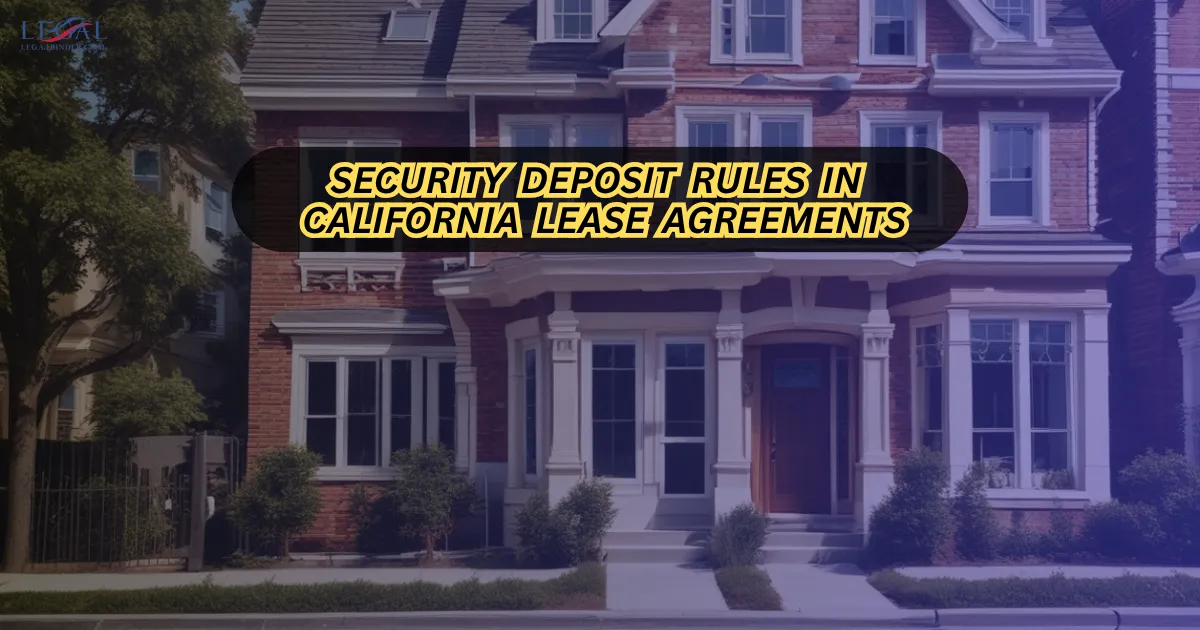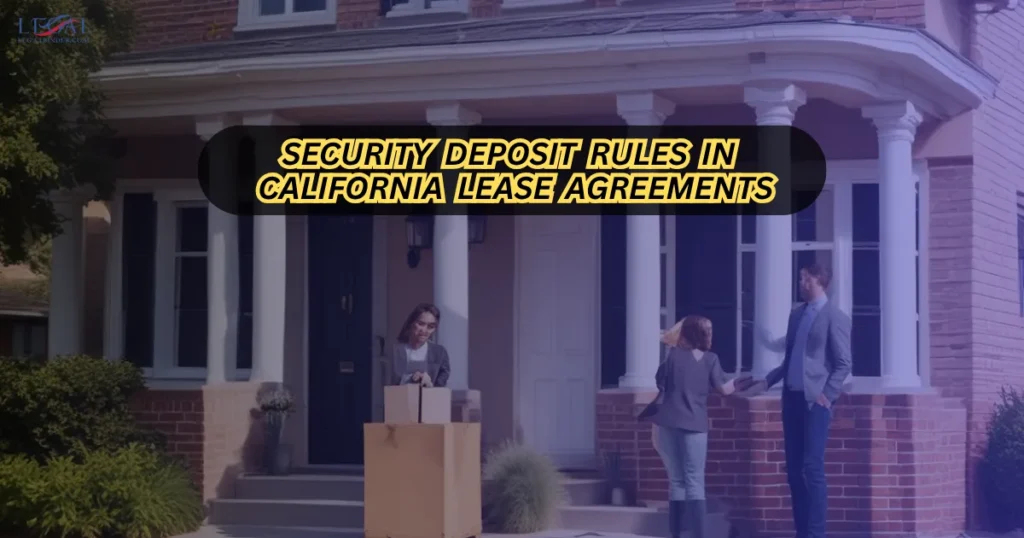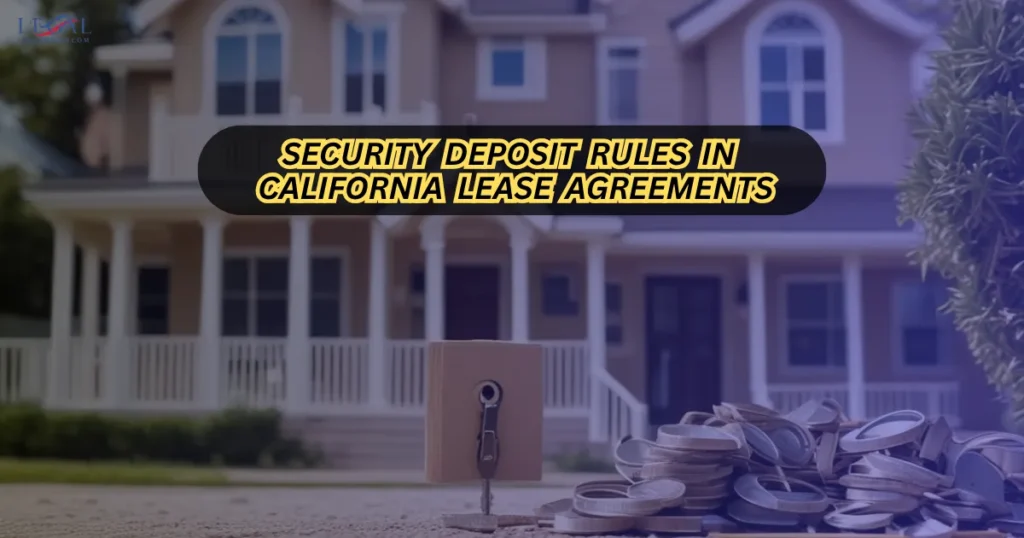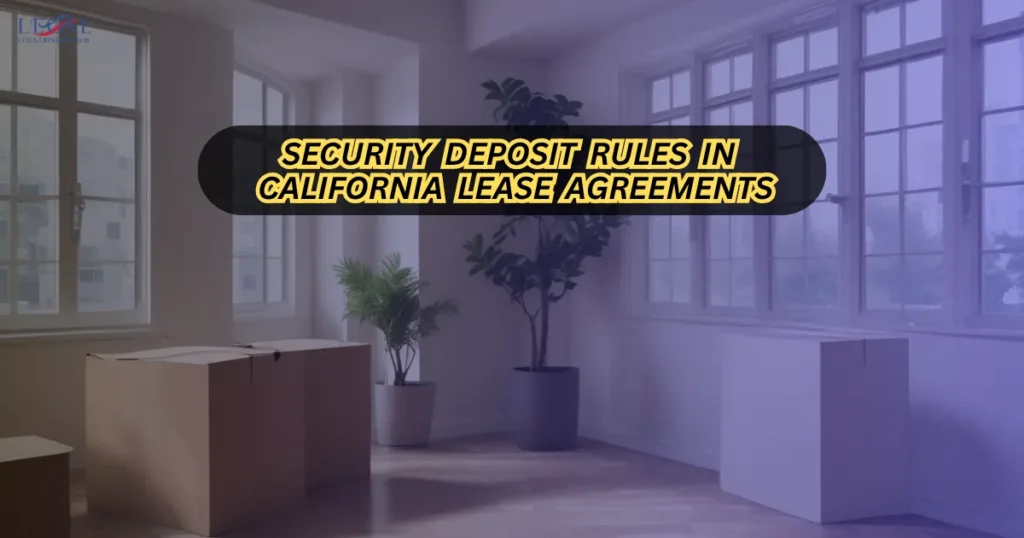Physical Address
304 North Cardinal St.
Dorchester Center, MA 02124
Physical Address
304 North Cardinal St.
Dorchester Center, MA 02124

Security deposit rules in California lease agreements are among the most misunderstood aspects of renting. If you’re a tenant, your deposit protects your interests—and if you’re a landlord, it’s your safeguard against damages or unpaid rent. The problem? Misunderstandings about these rules often lead to heated disputes, unnecessary stress, and even legal action.

Imagine moving out of your apartment after years of living there. You’ve scrubbed every corner and left the keys on the counter. A few weeks later, you receive only half your deposit back—with a vague note citing “repairs.” Without knowing your legal rights, you might accept this deduction. But in California, security deposits are tightly regulated, ensuring fairness for both tenants and landlords. Understanding these laws can save you from losing money—or a courtroom battle.
This in-depth guide takes you step-by-step through California’s security deposit laws, highlighting timelines, allowable deductions, and documentation tips to ensure a fair process.
For more California rental law resources, visit our homepage.
A security deposit is an amount of money a landlord collects at the start of a lease to cover potential damages, unpaid rent, or cleaning costs after you move out. California law, specifically the California Civil Code §1950.5, strictly regulates the collection, use, and return of these deposits.
Authoritative resources:
Pet deposits count toward the total maximum allowed. They are not separate from the legal limits above.
Security deposits can only be used for:
All deposits are refundable by law—terms stating “non-refundable” are illegal in California.
Landlords and tenants should use a checklist to document the condition of the unit, with photos to avoid disputes later.
California landlords must offer a pre-move-out inspection so tenants have a chance to fix issues before deductions.
Landlords have exactly 21 days after you move out to return the deposit or provide an itemized deduction statement.
Deductions must be listed along with receipts or estimates for repairs that cost more than $125.
Tenants cannot use the deposit as last month’s rent unless stated in the lease.
If a landlord wrongfully withholds your deposit, you can sue for up to twice the amount wrongfully retained in small claims court.

Receipts for deducted expenses are mandatory for transparency.
If you believe deductions are unfair, you may formally dispute them or take legal action.
How much can a landlord charge for a security deposit in California?Two months’ rent for unfurnished units; three months for furnished.How long does a landlord have to return a security deposit?21 calendar days after the tenant moves out.Can my landlord keep my deposit for normal wear and tear?No. Only damage beyond normal wear and tear is deductible.What can I do if my landlord wrongfully keeps my deposit?You may demand the deposit’s return in writing, then file a claim in small claims court.

Security deposit rules in California lease agreements exist to provide fairness, accountability, and trust between landlords and tenants. By knowing these rules, you can avoid disputes, protect your money, and make your rental experience smooth from move-in to move-out.
Whether you’re a tenant safeguarding your deposit or a landlord protecting your property, following California’s laws benefits everyone involved. And when in doubt, check official resources or seek legal advice before acting.
For more California rental law insights, visit our home page.